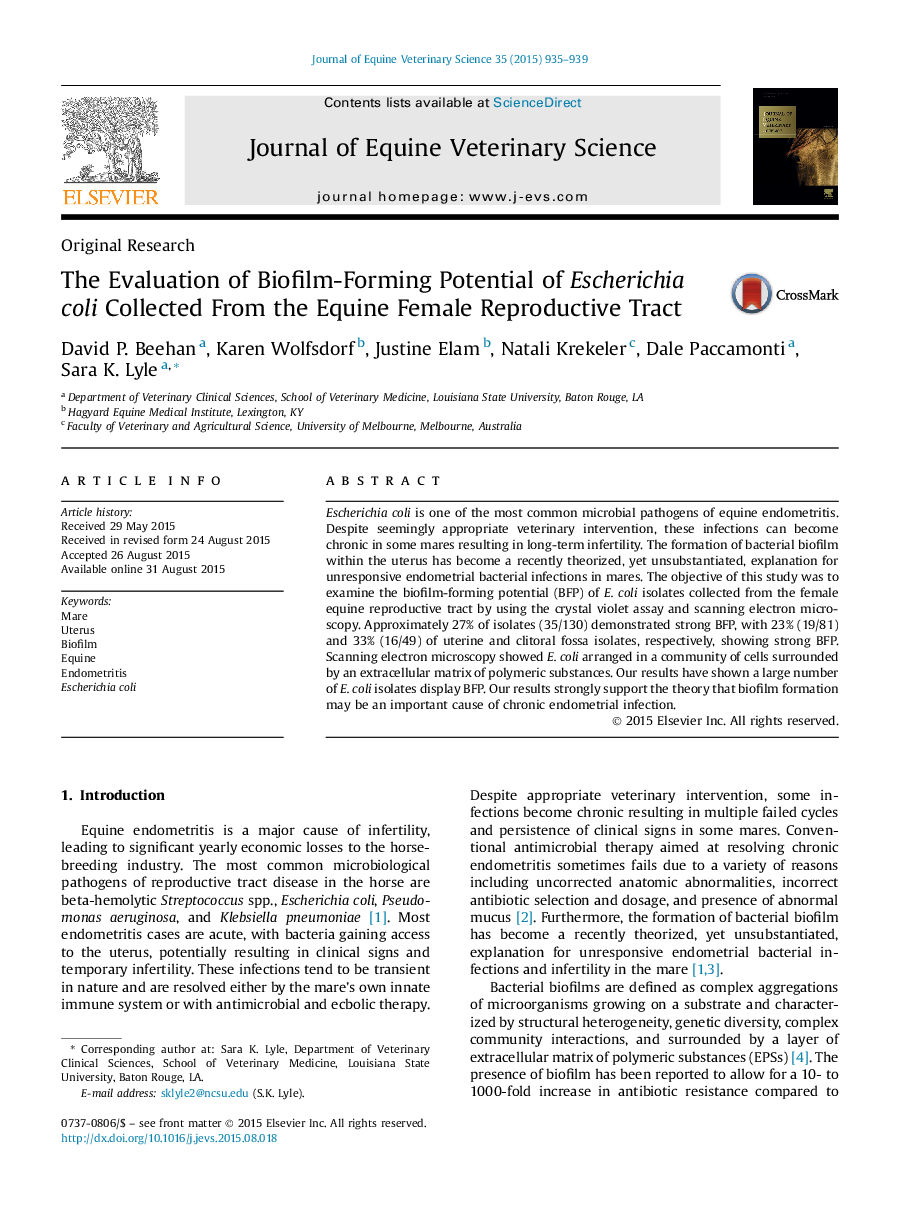| Article ID | Journal | Published Year | Pages | File Type |
|---|---|---|---|---|
| 2394745 | Journal of Equine Veterinary Science | 2015 | 5 Pages |
•We evaluate biofilm formation of 130 equine reproductive tract E.coli.•We confirm biofilm formation using scanning electron microscopy.•In total, 34% of isolates showed moderate to strong biofilm formation in vitro.•Twenty-three percent of uterine and 33% of clitoral fossa isolates were classified as strong.•SEM showed a community of E. coli cells surrounded by EPS.
Escherichia coli is one of the most common microbial pathogens of equine endometritis. Despite seemingly appropriate veterinary intervention, these infections can become chronic in some mares resulting in long-term infertility. The formation of bacterial biofilm within the uterus has become a recently theorized, yet unsubstantiated, explanation for unresponsive endometrial bacterial infections in mares. The objective of this study was to examine the biofilm-forming potential (BFP) of E. coli isolates collected from the female equine reproductive tract by using the crystal violet assay and scanning electron microscopy. Approximately 27% of isolates (35/130) demonstrated strong BFP, with 23% (19/81) and 33% (16/49) of uterine and clitoral fossa isolates, respectively, showing strong BFP. Scanning electron microscopy showed E. coli arranged in a community of cells surrounded by an extracellular matrix of polymeric substances. Our results have shown a large number of E. coli isolates display BFP. Our results strongly support the theory that biofilm formation may be an important cause of chronic endometrial infection.
